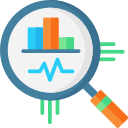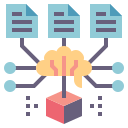Data Project - LifeCycle
Data may be the source of information leading to improve your market and customer intelligence.
Develop your own data system to get even better insights to increase sales and to improve operations, training and even business development.
Step 1: Define the Business Issues
At this stage, you should be clear with the objectives of your project. A brief outline of the expectations is the first step. Once this, the ovarall scope of work is defined, business objectives, the type of analysis and deliverables.
It is important to be able to answer doubts in order to get the best deliverable possible.


Step 2: Data Collection
To start, it is necessary to acquire all the data needed to solve the issue, I’ll categorize data, find errors and any concept omitted.
Step 3: Data Cleaning
This stage is considered to be one of the most time-consuming stages. However, in order to prevent wrongful outputs, it is important to eliminate any inconsistencies, duplicates and missing inputs in the data.


Step 4: Data Analysis and Exploration
Once it’s done cleaning the data, it is time to detect patterns and trends in the data. This is where useful insights and behavior of the data is explorated and analyzed.
Step 5: Data Modelling
If necessary, models to answers to the objectives are design. Common models include linear regressions, decision trees, and random forest modeling, among others.


Step 6: Data Validation
The hypothesis made previously are tested in this stage. In order to seek out answers to the objectives given, data algorithm processes and modeling methods to get efficiency and accuracy.
Step 7: Optimization and Deployment / Visualization and Presentation
Data visualization takes place. Data visualization is crucial to share findings. Interactive visualization tools are tremendously useful in illustrating conclusions.
At this stage, to improve the efficiency of the data model is key, in order to achieve accurate predictions.
